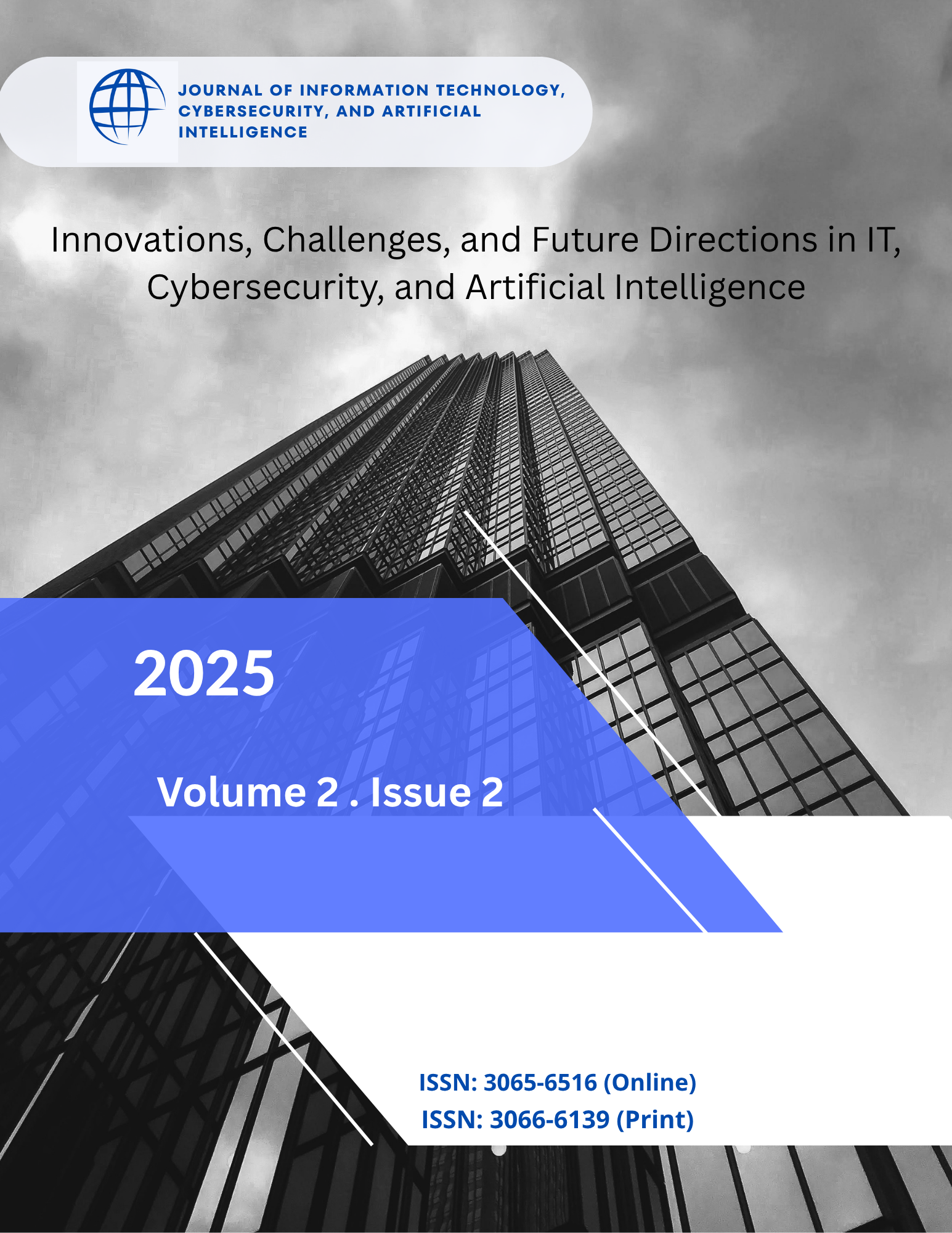MACHINE LEARNING (ML) TO EVALUATE GOVERNANCE, RISK, AND COMPLIANCE (GRC) RISKS ASSOCIATED WITH LARGE LANGUAGE MODELS (LLMs)
DOI:
https://doi.org/10.70715/jitcai.2025.v2.i2.022Keywords:
Artificial Intelligence, Machine learning, Large Language Model, Governance, Risk, ComplianceAbstract
In today’s AI-driven digital world, Governance, Risk, and Compliance (GRC) has become vital for organizations as they leverage AI technologies to drive business success and resilience. GRC represents a strategic approach that helps organization using Large Language Models (LLMs) automation tasks and enhances customer service, while maintaining the regulatory complexity across various industries and regions. This paper explores a machine learning approach to evaluate Governance, Risk, and Compliance (GRC) risks associated with Large Language Models (LLMs). It utilizes Azure OpenAI Service logs to construct a representative dataset, with key features including response_time_ms, model_type, temperature, tokens_used, is_logged, data_sensitivity, compliance_flag, bias_score, and toxicity_score. These features are used to train a model that predicts GRC risk levels in LLM interactions, enabling organizations to improve efficiency, foster innovation, and deliver customer value, while maintaining compliance and regulatory requirements.
Downloads
References
[1] Balasubramaniam, N., Kauppinen, M., Kujala, S., & Hiekkanen, K. (2020). Ethical guidelines for solving ethical issues and developing AI systems. Product-Focused Software Process Improvement, 331, 331–346. https://link.springer.com/chapter/10.1007/978-3-030-64148-1_21
[2] European Commission. (2021). Ethics guidelines for trustworthy AI. https://ec.europa.eu/futurium/en/ai-alliance-consultation/guidelines
[3] Software and Information Industry Association (SIIA). (2017). Ethical principles for artificial intelligence and data analytics, 1–25.
[4] IEEE. (2021). Ethically Aligned Design, First Edition. https://ethicsinaction.ieee.org/
[5] Chazette, L., & Schneider, K. (2020). Explainability as a non-functional requirement: Challenges and recommendations. Requirements Engineering, 25(4), 493–514. https://link.springer.com/article/10.1007/s00766-020-00333-1
[6] Lombrozo, T. (2012). Explanation and abductive inference. https://ifilnova.pt/wp-content/uploads/2021/12/Lombrozo-2012.pdf
[7] Chazette, L., Brunotte, W., & Speith, T. (2021). Exploring explainability: A definition, a model, and a knowledge catalogue. International Requirements Engineering Conference, 2021, 197–208.
[8] Chazette, L., Karras, O., & Schneider, K. (2019). Do end-users want explanations? Analyzing the role of explainability as an emerging aspect of non-functional requirements. International Requirements Engineering Conference, 2019, 223–233.
[9] Horkoff, J. (2019). Non-functional requirements for machine learning: Challenges and new directions. International Requirements Engineering Conference, 2019, 386–391.
[10] Vaughan, J. W., & Wallach, H. (2021). A human-centered agenda for intelligible machine learning. In M. Pelillo & T. Scantamburlo (Eds.), Machines We Trust: Perspectives on Dependable AI (pp. 32–47). Cambridge, MA: MIT Press.
[11] Russom, P. (2011). Big Data Analytics. TDWI Best Practices Report, Fourth Quarter, 4–5, 22.
[12] Zhang, Q., Cheng, L., & Boutaba, R. (2010). Cloud computing: State-of-the-art and research challenges. Journal of Internet Services and Applications, 1, 7. https://jisajournal.springeropen.com/articles/10.1007/s13174-010-0007-6
[13] Kumar, V., Sinha, D., Das, A. K., Pandey, S. C., & Goswami, R. T. (2020). An integrated rule-based intrusion detection system: Analysis on UNSW-NB15 data set and the real time online dataset. Cluster Computing, 23, 1397–1418. https://link.springer.com/article/10.1007/s10586-019-03008-x
Downloads
Published
Issue
Section
License
Copyright (c) 2025 Upakar Bhatta (Author)

This work is licensed under a Creative Commons Attribution 4.0 International License.











